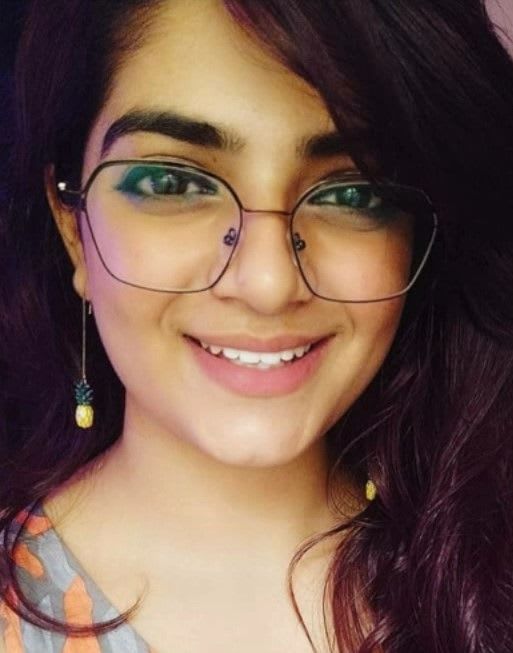Asymmetrical Face: Causes, Treatments, and More

What Is an Asymmetrical Face?
Before we learn the answer to the above-said question, let's know what asymmetrical face is. Symmetrical face means when either side of the face is similar to each other. However, an asymmetrical face has different sized ears, eyes, misplaced heights, or crooked teeth.
Symmetrical structure defines facial beauty with precision, and people often juggle with how to get a symmetrical face. Generally, the reason behind the misalignment of facial parts is genetics, but there are also many reasons which lead to an asymmetrical face.
Asymmetrical Face Causes
- Ageing: Facial asymmetry has a direct relation with increasing age, which is quite natural. Although bones stop growing after puberty, a person's nose or ears still enlarge due to cartilage growth. It further leads to face misalignment.
- Lifestyle: One's lifestyle option also impacts the asymmetrical face structure. For instance, smoking exposes one's face to toxins, leading to vascular issues. In a 2014 study, factors like sleep position, poor posture, or smoking pose a risk to facial symmetry.
- Stroke: A facial sinking is a prominent sign of stroke and is a medical emergency. Reduced blood flow during stroke develops all of a sudden facial asymmetry, which means you need to consult your doctor immediately. It may lead to difficulty in speaking, weakened legs and arms, etc.
Types of Facial Asymmetry
The four types of the asymmetrical face are:
- Deviation of the chin
- Deviation of the chin and bilateral difference between mandibular rami length, especially due to jawline or chin bone.
- Changes in the volume of one side of the face, especially when estrogen level declines.
- Bilateral difference between mandibular rami length
How Common Is Having an Asymmetrical Face?
As per a 2015 Study, approx 12-37% of the orthodontic patients had an asymmetrical face. Further, radiographic examination showed that such a prevalence rose to above 50%.
If you think your face isn't symmetrical and are wondering how to get a symmetrical face, remember, asymmetry is very common. Many people don't even bother with their misaligned structure.
How to Test if Your Features Are Symmetrical?
Take the print of your facial photo and check if:
- The forehead peak and bottom chin align in the same line. It tests vertical symmetry.
- The two ends of the eyes are in the same line.
- The crease lips begin on the same side.
You can even check online apps, which allow you to test the symmetrical structure of your face.
How to Fix an Asymmetrical Face?
Some asymmetrical face treatments and natural methods help fix asymmetrical faces. If the asymmetry is due to ageing or genetics, there is no need for medical intervention. However, other asymmetrical face causes like injuries require medical intervention.
Here are some popular cosmetic procedures or facial asymmetry surgery:
- Fillers: Doctors inject soft fillers into the misaligned area to achieve facial symmetry. Using botox is a famous way to raise one's eyebrows.
- Rhinoplasty: Doctors fix the facial asymmetry due to a broken nose through corrective rhinoplasty. Although it has a permanent result, the nose may regain its previous shape over time.
- Orthodontics: Orthodontic treatments like putting on braces improves the smile and lower portion of your face. Crooked teeth impact one's smile. However, orthodontic treatment fixes these minor asymmetrical parts of the face.
- Facial implants: It is the best option to fix an asymmetrical face caused due to the skeletal structure. Experts use implants to enhance one's chin, jaw, and cheeks. It is a permanent surgery involving plastics, metals, silicone, gels, proteins, and alike.
How to Fix an Asymmetrical Face Naturally?
If you want to fix an asymmetrical face naturally, try out a few asymmetrical face exercises like a facial stretch, cheek toning, partial wink, etc. Facial yoga exercises like puffing the cheeks, pushing air into the mouth, and moving the air from one side to another improve blood circulation and prevent skin sagging.
Facial Asymmetry Surgery
Although facial asymmetry surgery is not a mandatory option, it may help align your facial parts, improving looks and features. Models and celebrities highly prefer rhinoplasty and lip surgery to enhance their looks and figures.
Does Asymmetrical Crying Face Go Away?
Congenital Asymmetrical Crying Face or ACF is rare in newborns. Generally, one acquires it during birth trauma. However, it shows improvement within a month and disappears over time in major cases. As one grows up, facial asymmetry is less noticeable.
The asymmetrical face is very common and should not bother one mentally. Seek expert help if it seems quite urgent.

